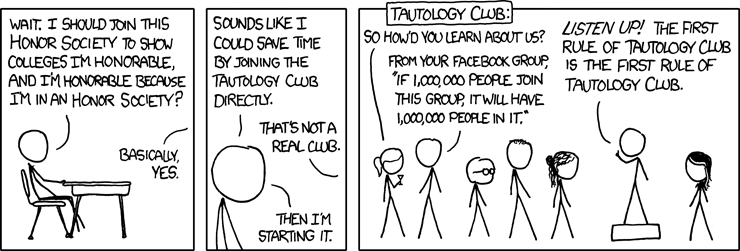One girl had two yellows, and she was asked to share "Two random facts." The idea was to share two random facts about herself, but she ended up saying some random world facts (I forget what they were), and we all laughed at her wit. We ended before I got to yellow, and since I had five yellow M&Ms, it would have taken me a while to think of five interesting facts anyways. I decided to save those five facts for an interesting blog post (much like my previous, and hopefully reoccurring, "What's Up With...?"s).
This weekend, I had lunch with my brother for his birthday. While touring his new apartment, he asked if I wanted to borrow the Goldeneye Wii game that I had gotten him for Christmas. Part of his reasoning was to "distract" me, because I was writing blogs so quickly. So I decided to fit my "Five Interesting Facts" blog in now, since it should be a quick read, and I can go back to playing Goldeneye when I'm done.
Interesting Fact #1:
Moss grows in the shade.
This is probably pretty obvious, but I just wanted to make sure everyone knew. Everyone's heard the 'moss grows on the North side of the tree' bit, but that's only true because in the Northern hemisphere, the North side of the tree gets more shade. Moss really doesn't like heat, or sunlight. In the Southern hemisphere, the Southern side of the tree gets more shade, and thus moss there tends to grow on the South side of the trees.
But even in the Northern hemisphere, moss can grow on the south side of the tree, especially in dark, damp, Rainforest-y areas where the forest floor hardly gets any sunlight at all. The same is true for the Southern hemisphere.
The adage "Moss always grows on the North side of the tree" is really only for hikers who get lost and need to find their way back - and it's only helpful if you're in the Northern hemisphere (which is about 90% of the earth's population; no wonder the planet's tilted), and moss happens to be growing (IE not the desert), and it's not a dark, shady area, where moss is everywhere, and you're lost in such a way that knowing North and South (which we assume can't be told by the sun) is even helpful to you.
Interesting Fact #2:
The Aurora in Antarctica is prettier than the Aurora in Alaska.
OK, this may be more of an opinion - but did you even know there's an aurora at the South pole as well as at the North pole? When people think of an aurora, they usually think of the aurora, as if there's only one. The aurora that people think of is the Aurora Borealis; the other one is called the Aurora Australis, and is seen from the tip of South America, from Australia and New Zealand, and primarily from Antarctica.
The auroras are formed when solar winds hit the Earth's magnetic field, which diverts the harmful wind away from the planet's surface. At the magnetic poles, however, the diverted wind is sucked into the Thermosphere, where it loses energy and reacts with stuff to form the colorful effect (this is all explained extremely simply, by the way). That's why there are no auroras in other regions of the planet, because there's no way for the solar wind to get into the atmosphere to have its reaction.
It may be, though, that the Aurora Australis is prettier than the Aurora Borealis. There's probably less air pollution that the Northern equivalent, and there's definitely less light pollution. It's another good reason to want to live in Antarctica.
Interesting Fact #3:
Three dots or periods in a row is called an Ellipsis.
You've probably seen the 'three dots in a row' before, commonly known as 'dot dot dot'. Professionally, the ellipsis is used is quotations, when the quoter wants to leave out some of what the person originally said (EX: "I have a dream ... where they will not be judged by the color of their skin."). However, it's also used a lot in dialogue to show silence or someone's voice petering out (EX: "So, I, uh ..." "... what?"). You may have seen examples of this use for the ellipsis in books, comics, or graphic novels, or anywhere else you might see dialogue written.
Some people, when faced with an awkward silence in real life, like to say aloud "dot dot dot," as if to dramatize the fact that no one is speaking. After discovering the proper name for the 'dot dot dot', I decided to take it on myself to say "ellipsis" during any situation when someone else might end up saying "dot dot dot." Half of the time, no one knows what I mean, but all of the time I feel cool.
Interesting Fact #4:
'Sic' has awesome powers when found inside brackets.
Not very many people have actually seen the [sic] symbol before, and if you have, you may not know what it means. It comes from the Latin word for "thus" or "so," and it's used by professional writers, most often reporters, when quoting someone. When it's used, it appears as the lowercase letters 'sic', in superscript brackets (thus[sic]).
 |
| Not actually relevant. |
When placed at the end of a quotation, the [sic] symbol indicates that somewhere inside the quotation is a misspelling or a misuse of grammar that did not originate from the reporter. For example, if I were to write "Four store and seven years ago..." almost everyone would jump on me for having misspelled a word - if I was to write "Four store and seven years ago...[sic]," I'd be indicating that the person I'm quoting actually said 'four store' and not 'four score'. The [sic] is the reporter's way of telling you that they're aware of the error, and that it wasn't made on their end.
[Sic] has very few applications, and is generally only used by professional writers, since amateurs tend to prefer to fix up the quotes. It's also frequently used to make the quotee sound like an idiot:
"I personally believe that U.S. Americans are unable to do so because, uh, some . . . people out there in our nation don't have maps and, uh, I believe that our, uh, education like such as in South Africa and, uh, the Iraq, everywhere like such as, and, I believe that they should, our education over HERE in the U.S. should help the U.S., uh, or, uh, should help South Africa and should help the Iraq and the Asian countries, so we will be able to build up our future, for our children."[sic] -Caitlin Upton, when asked why some people can't find the U.S. on the map.I have been known to bastardize the [sic] symbol by using it in sentences to signify when something I said, which may appear to be wrong to incorrect, was said on purpose.
Interesting Fact #5:
I haven't found the word that I'm looking for.
 I can see you all thinking to yourself 'Wait, what?' Well, it's true - there are certain words in the English language that Linguistics-majors like to use to define certain things we say or do. I intended on sharing one of those little-known about words with you today, but no matter how much I search on Google, I can't find it. It's a word I hardly ever use, but I always found interesting. It was taught to me by my oldest brother, and eventually he will remind me what the word is, and I will edit this blog to inform you (by the way, it's the word used to define statement that are self-explanatory, like "this statement is true" or "this box is a box" or "I'm wearing the shoes that I'm wearing").
I can see you all thinking to yourself 'Wait, what?' Well, it's true - there are certain words in the English language that Linguistics-majors like to use to define certain things we say or do. I intended on sharing one of those little-known about words with you today, but no matter how much I search on Google, I can't find it. It's a word I hardly ever use, but I always found interesting. It was taught to me by my oldest brother, and eventually he will remind me what the word is, and I will edit this blog to inform you (by the way, it's the word used to define statement that are self-explanatory, like "this statement is true" or "this box is a box" or "I'm wearing the shoes that I'm wearing").Until then, I'll explain Litotes to you, because that's another word use to define strange things we do with our language. A litotes is an understatement expressed by the negative of the affirmative's contrary. Confusing, right? Here are some examples: "Not bad" (which means 'good'), or "You are not wrong" (which mean 'you are right').
Basically, a litotes (spelled the same singular or plural, apparently) is a way to say understate something by saying it isn't the opposite thing. If you did a great job on your work, but I wanted to understate what you did (because I'm a prick, in this example), I'd say "you didn't do terribly." The dictionary definition for "you didn't do terribly" and "you did well" is the same - however, when I use a litotes, I imply that you normally would have done terribly, and I manage to still mock you (*fistpump*).
You'll never use the word 'litotes', but you will use litotes, and the next time you do so, you'll know what you're doing.
(EDIT: The word I was looking for was, in fact, 'Tautology'. A tautology is a phrase with an unnecessary repetition of meaning. Tautological phrases include 'free gift' (a gift is, by definition, free), 'planning ahead', and 'first introduced'.
The reason why Tautologies are really cool, however, is because they also describe mathematical and logical statements. Admittedly, I don't know much about mathematics, so I'm mostly interested in tautological statements. All tautologies are true because they combine two phrases that mean the same thing but in different ways. For example, you could say 'we'll either win or we wont', 'the past is over', or 'nothing is written in stone - until it is.'







1 comment:
Now I'm sorry that I took so long to get to this.
Perchance you are thinking of a tautology. (ie. a logical statement which is equivalent to true) (e.g. I always feel tired, except for when I don't) Your example statements might be classified as tautologies. (Except for, the first one, which is ambiguous.)
If tautology is not what you were thinking of, then I'm at a loss.
Cassey and I like to speak in tautologies. (It's a custom we picked up from a friend at institute, back when we were in institute.) Often we are prone to say ridiculous things like "we're always late". That statement is patently false. However, we can fix it (and destroy any informational value) by appending "except for when we aren't". (We never really say things like "I am wearing the shoes that I am wearing", but that would be true too, even if you aren't wearing any.)
Post a Comment